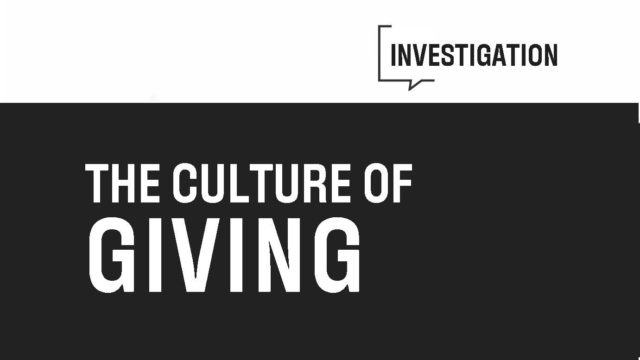What does the Quebec philanthropy scene look like in 2022? What is the role of private and institutional foundations, charitable organizations and patrons? Where does the money set aside by these organizations come from and where does it go? We raised these questions with Caroline Bergeron, head of the Certificate in Philanthropic Management at the Faculty of Continuing Education at the Université de Montréal. She helps us better understand this sometimes opaque environment, which seems to be in full mutation.
“It’s not just an impression,” confirms Professor Bergeron. “Over the past ten years, we have seen major changes in the world of philanthropy, brought about by a new generation of managers.
Caroline Bergeron knows all about these changes. A professor at the Université de Montréal where she teaches the Introduction to Philanthropy course, she also directed the Quebec hub of PhiLab, the Canadian research partnership network on philanthropy from 2019 to 2020. “The large-scale thinking is taking place in academic circles, but within foundations themselves, there are more and more challenges to the old ways. Donors are more informed and more demanding: just about everywhere, there are calls for more professionalism and especially more transparency.”
A bit of history
If there is something that can be described as a true philanthropy industry in Quebec today, it has not always been the case. Modern philanthropy, often associated with prestigious families, was born at the turn of the last century, with the involvement of the Carnegies, Rockefellers and other business titans who funneled the staggering profits generated by their companies into a variety of causes – from fighting poverty to promoting the arts. “There is no doubt about it: philanthropy as we know it today is a pure product of capitalism,” confirms Caroline Bergeron. A trend that will only get stronger with time.
“There is no doubt about it: philanthropy as we know it today is a pure product of capitalism.” — Caroline Bergeron
“With Bill Gates and Warren Buffet, we have seen the advent of what we call philanthrocapitalism. These foundations accumulate capital and thus ensure their sustainability, but they do more than give money away: they build things and act directly on the ground, as the Bill and Melinda Gates Foundation did with its polio eradication effort.”
“Maîtres chez nous”
What about Quebec? It is often said that the culture of philanthropy is more developed in the English-speaking community than in the French-speaking majority, for whom the Catholic Church has long played the role of protector and benefactor. “There is some truth to this, but things are not that simple,” says Caroline Bergeron. Generally speaking, Protestants tend to value personal success, which then allows them to help others; whereas Catholics tend to follow the philosophy of ‘blessed are the poor’. And Quebec is a province where the social safety net has always been very important and where the government plays a more important role than elsewhere.”
Yet what is certain is that the Quiet Revolution, which allowed for freedom from the Church, also fostered the emergence of what would later be called the ‘Quebec Inc.’ with the Péladeau, Coutu, Lemaire and Chagnon families building empires and creating private foundations bearing their names. “These private foundations represent the most opaque part of philanthropy,” explains Caroline Bergeron. Indeed, the only legal constraint on private foundations is what is called the “disbursement quota”: this principle requires foundations to distribute a minimum of 3.5% of their revenues annually to causes chosen by their directors. “It’s one of those principles that seems to be from another era, and there’s a real movement to increase that disbursement quota,” says Caroline Bergeron. “We’re living in a time of social deficit, and these foundations are sitting on millions of dollars that could be more useful on the ground than in accounts accruing interest.” Especially, she reminds us, since these sums, which have allowed philanthropists to save on taxes – thus depriving the state of revenue – now belong to the community.
“These private foundations represent the most opaque part of philanthropy.” — Caroline Bergeron
From donors to partners
When asked about the future of philanthropy, Caroline Bergeron shows some optimism, but she believes that donors, foundations and organizations need to be educated and that transparency and accountability are essential. The general public especially needs to be better informed because the vast majority of funds do not come from corporations and foundations, but from individuals. “This is not trivial: yes, there are huge foundations that manage millions, but about 75 percent of the money raised in philanthropy comes from individuals.”
That’s why the big issues discussed on a daily basis at PhiLab should be the subject of more public conversations, she believes. “People need to understand that raising money costs money. But to do that, we need to show them where the money goes. Transparency is a core value for the future of philanthropy.”
Thinking and speaking together, in public and for the public good, is clearly something Porte Parole can relate to! And the cultural sector is probably better suited than others to this transparency exercice, since the people who donate to cultural organizations are generally also consumers of culture, and thus the beneficiaries.
Back to the investigation page.




